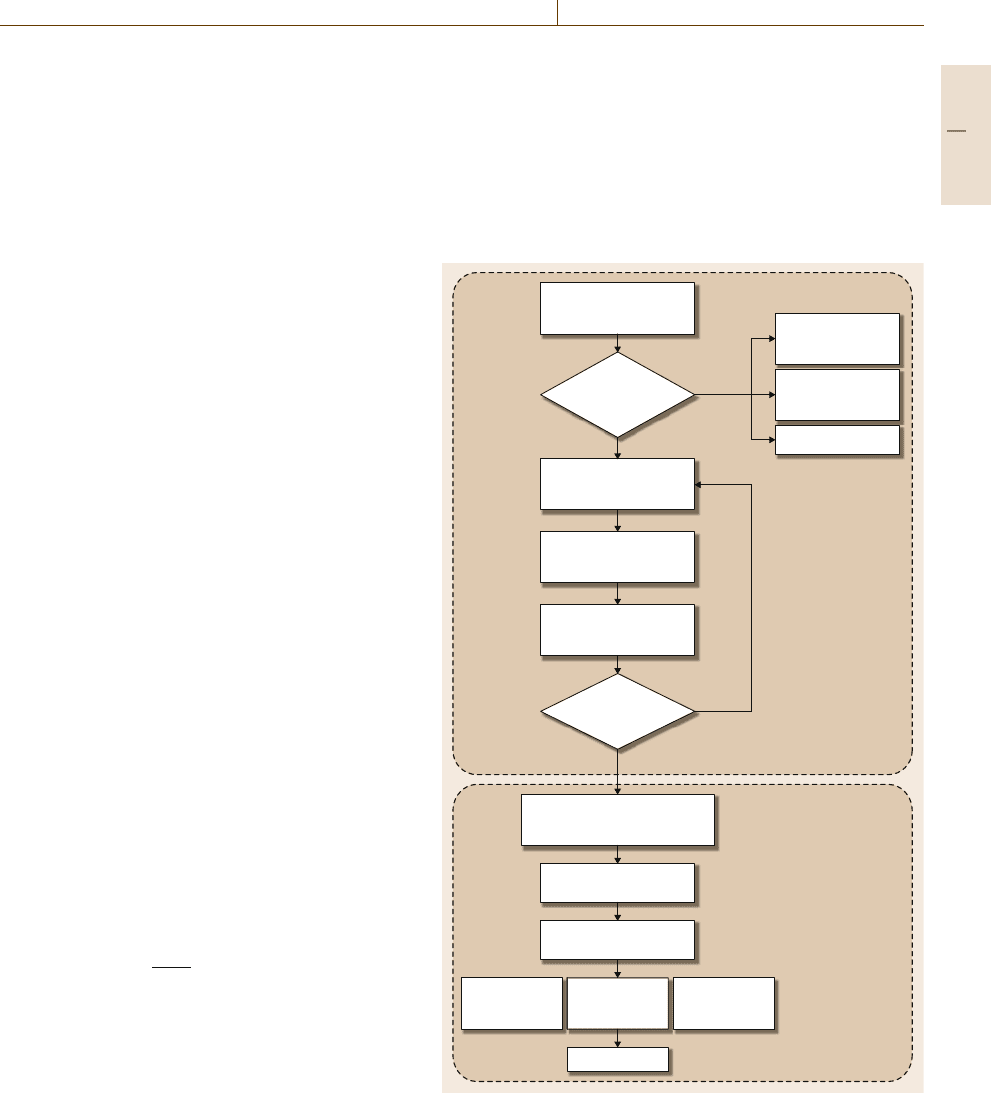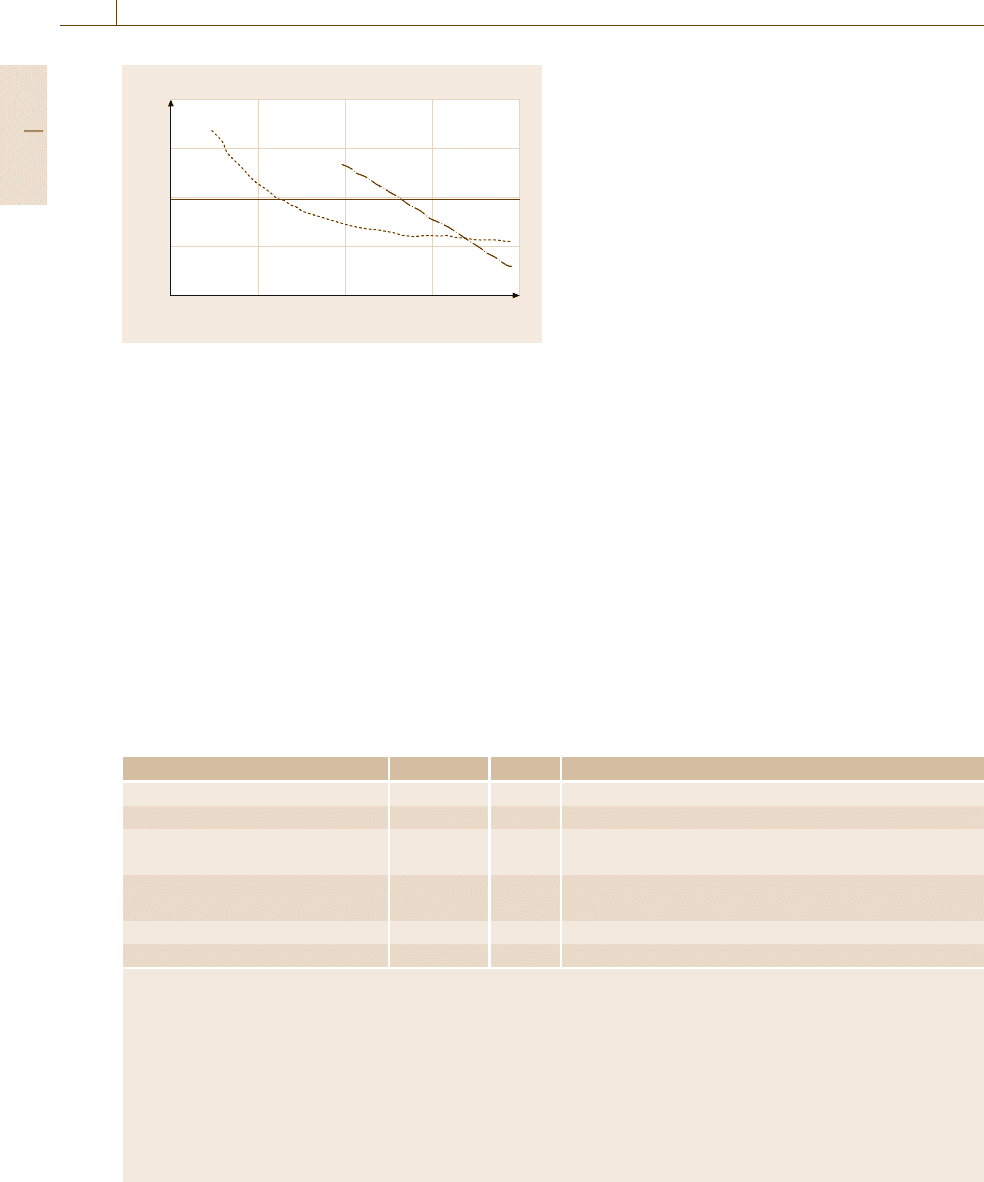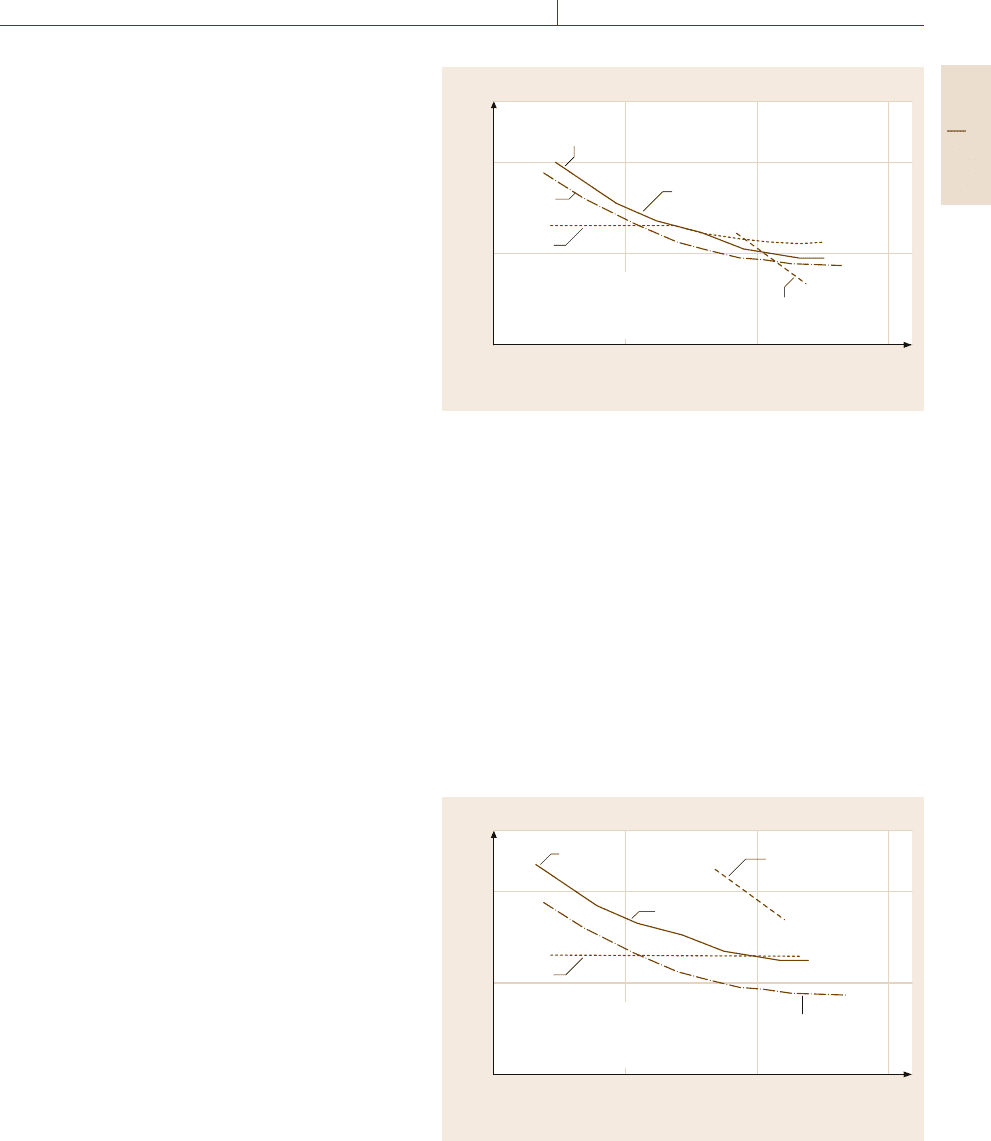Nof S.Y. Springer Handbook of Automation
Подождите немного. Документ загружается.


Safety Warnings for Automation References 695
http://www.fmcsa.dot.gov/facts-research/research
-technology/report/forward-collision-warning-
systems.htm
39.113 US Department of Labor, Mine Safety and
Health Administration, (n.d.): Horns, backup
alarms, and automatic warning devices, Ti-
tle 30 Code of Federal Regulations (30 CFR
56.14132, 57.1413230, 77.410, 77.1605), retrieved from
http://www.msha.gov/STATS/Top20Viols/tips/
14132.htm
Part D 39
“This page left intentionally blank.”

697
Automati
Part E
Part E Automation Management
40 Economic Rationalization
of Automation Projects
José A. Ceroni, Valparaiso, Chile
41 Quality of Service (QoS) of Automation
Heinz-Hermann Erbe (Δ), Berlin, Germany
42 Reliability, Maintainability, and Safety
Gérard Morel, Vandoeuvre, France
Jean-François Petin, Vandoeuvre, France
Timothy L. Johnson, Niskayuna, USA
43 Product Lifecycle Management
and Embedded Information Devices
Dimitris Kiritsis, Lausanne, Switzerland
44 Education and Qualification for Control
and Automation
Bozenna Pasik-Duncan, Lawrence, USA
Matthew Verleger, West Lafayette, USA
45 Software Management
Peter C. Patton, Oklahoma City, USA
Bijay K. Jayaswal, Minneapolis, USA
46 Practical Automation Specification
Wolfgang Mann, Seibersdorf, Austria
47 Automation and Ethics
Srinivasan Ramaswamy, Little Rock, USA
Hemant Joshi, Conway, USA

698
Automation Management. Part E The main aspects of automation management are covered by the chapters
in this part: Cost effectiveness and economic reasons for the design, feasibility analysis, implementation, ratio-
nalization, use, and maintenance of particular automation; performance and functionality measures and criteria,
such as quality of service, energy cost, reliability, safety, usability, and other criteria; issues involved with manag-
ing automation over its life cycles, and the use of embedded automation for this management; how to best prepare
the next generation of automation engineers, practitioners, inventors, developers, scientists, operators, and gen-
eral users, and how to best prepare and qualify automation professionals. Related also to the above topics are
the issues of how to manage automatically and control the increasingly complex and rapidly evolving software
assets, their maintenance, replacement, and upgrading; how to simplify the specification of increasingly more in-
tegrated, inter-dependent and complex automation; and what are some of the ethical concerns with automation
and solutions being developed to prevent abuse of automation and with automation.
This part concludes the first portion of the Handbook, which is devoted to the science, theory, design, and man-
agement aspects and challenges of automation. The next portion is devoted to the main functional areas of
automation, demonstrating the role of the previously discussed theories, techniques, models, tools and guide-
lines, as they are applied and implemented specifically and successfully and the obstacles they face in those
functional areas.

699
Economic Rati
40. Economic Rationalization of Automation Projects
José A. Ceroni
The future of any investment project is undeniably
linked to its economic rationalization. The chance
that a project is realized depends on our ability
to demonstrate the benefits that it can convey
to a company. However, traditional investment
evaluation must be enhanced and used carefully in
the context of rationalization to reflect adequately
the characteristics of modern automation systems.
Nowadays automation systems often take the form
of complex, strongly related autonomous systems
that are able to operate in a coordinated fashion
in distributed environments. Reconfigurability
is a key factor affecting automation systems’
economic evaluation due to the reusability of
equipment and software for the manufacturing
of several products. A new method based on an
analytical hierarchy process for project selection is
reviewed. A brief discussion on risk and salvage
consideration is included, as are aspects needing
further development in future rationalization
techniques.
40.1 General Economic Rationalization
Procedure ............................................ 700
40.1.1 General Procedure for Automation
Systems Project Rationalization..... 700
40.1.2 Pre-Cost-Analysis Phase .............. 701
40.1.3 Cost-Analysis Phase..................... 704
40.1.4 Additional Considerations ............ 707
40.2 Alternative Approach to the Rationaliza-
tion of Automation Projects................... 708
40.2.1 Issues in Strategic Justification
of Advanced Technologies ............ 708
40.2.2 Analytical Hierarchy Process (AHP) . 708
40.3 Future Challenges and Emerging Trends
in Automation Rationalization............... 711
40.3.1 Adjustment of Minimum
Acceptable Rate of Return
in Proportion to Perceived Risk ..... 711
40.3.2 Depreciation
and Salvage Value Profiles............ 712
40.4 Conclusions .......................................... 712
References .................................................. 713
Worldwide adoption of automation advanced tech-
nologies such as robotics, flexible manufacturing, and
computer-integrated manufacturing systems has been
key to continued improvement of competitiveness in
present global markets [40.1]. Adequate definition and
selection of automation technology offers substantial
potential for cost savings, increased flexibility, better
product consistency, and higher throughput. However,
justifying automation technology based only on tradi-
tional economic criteria is at least biased and often
wrong. Lack of consideration of automation strate-
gic and long-term benefits has often led to failure in
adopting it [40.2–5]. Ignoring automation’s long-term
benefits and impact on company strategy leads to poor
decision-making ontechnologies to implement. Usually
nowadays, the long-range cost of not automating can
turn out to be considerably greater than the short-term
cost of acquiring automation technology [40.6].
A primary objective of any automation project must
be to develop a new integrated system able to provide
financial, operational, and strategic benefits. Thus the
automation project should avoid replicating current op-
erational methods and support systems. In this way, the
automation project should make clear the four differ-
ences from any other capital equipment project:
•
Automation provides flexibility in production ca-
pability, enabling companies to respond effectively
to market changes, an aspect with clear economic
value.
•
Automation solutions force users to rethink and sys-
tematically define and integrate the functions of
Part E 40

700 Part E Automation Management
their operations. This reengineering process creates
major economic benefits.
•
Modern automation solutions are reprogrammable
and reusable, with components often having lifecy-
cles longer than the planned production facility.
•
Using automation significantly reduces require-
ments for services and related facilities.
These differences lead to operational benefits that in-
clude:
•
Increased flexibility
•
Increased productivity
•
Reduced operating costs
•
Increased product quality
•
Elimination of health and safety hazards
•
Higher precision
•
Ability to run longer shifts
•
Reduced floor space.
Time-based competition and mass customization of
global markets arekeycompetitive strategies of present-
day manufacturing companies [40.7]. Average product
lifecycle in marketplaces has changed from years
to months for products based on rapidly evolving
technologies. This demands agile automated systems,
created through the concept of common manufac-
turing processes organized modularly to allow rapid
deployment in alternative configurations. These recon-
figurable automated systems represent the cornerstone
in dealing with time-based competition and mass cus-
tomization.
Justification of reconfigurable automation systems
must necessarily include strategic aspects when com-
paring them with traditional manufacturing systems
developed underthe product-centricparadigm. Product-
specific systems generally lack the economical recon-
figuration ability that would allow them to meet the
needs of additional products. Consequently traditional
systems are typically decommissioned well before their
capital cost can be recovered, and are then held in
storage until fully depreciated for tax purposes before
being sold at salvage value. However, it must be kept
in mind that reconfigurability claims for additional in-
vestment in design, implementation, and operation of
the system. Quick-change tooling are an example of re-
configurability equipment which allows rapid product
changeover. It is estimated that generic system capa-
bilities can increase the cost of reconfigurable system
hardware by as much as 25% over that of a comparable
dedicated system. On the other hand, software required
to configure and run reconfigurable automation systems
is often much more expensive to develop than simple
part-specific programs. Traditional economic evaluation
methods fail to consider benefits from capital reutiliza-
tion over multiple projects and also disregard strategic
benefits of technology. Upgrade of traditional eco-
nomic evaluation methods is required to account for the
short-term economic and long-term strategic value of
investing in reconfigurable automation technologies to
support the evolving production requirements of a fam-
ily of products. In this chapter the traditional economic
justification approach to automationsystem justification
is first addressed. A related discussion on economic as-
pects of automation not discussed in this chapter can
be found in Chap.7. New approaches to automated sys-
tem justification based on strategic considerations are
presented next. Finally, a discussion on justification ap-
proaches currently being researched for reconfigurable
systems is presented.
40.1 General Economic Rationalization Procedure
In generalterms, an economic rationalization enablesus
to compare the financial benefits expected from a given
investment project with alternative use of investment
capital. Economic evaluation measures capital cost plus
operating expenses against cash-flow benefits estimated
for the project. This section describes a general ap-
proach to economic rationalization and justification of
automation system projects.
40.1.1 General Procedure for Automation
Systems Project Rationalization
The general procedure for rationalization and analysis
of automation projects presented here consists of a pre-
cost-analysis phase, followed by a cost-analysis phase.
Figure 40.1 presents the procedure steps and their se-
quence. The sequence of steps in Fig.40.1 is reviewed
Part E 40.1

Economic Rationalization of Automation Projects 40.1 General Economic Rationalization Procedure 701
in detail in the rest of this section and an example cost-
analysis phase is described.
40.1.2 Pre-Cost-Analysis Phase
The pre-cost-analysis phase evaluates the feasibility of
the automation project. Feasibility is evaluated in terms
of the technical capability to achieve production capac-
ity and utilization as estimated in production schedules.
The first six steps of the procedure include determin-
ing the most suitable manufacturing method, selecting
the tasks to automate, and the feasibility of these op-
tions (Fig.40.1). Noneconomic considerations must be
studied and all data pertinent to product volumes and
operation times gathered.
Alternative Automated Manufacturing Methods
Production unit cost at varying production volumes for
three main alternative manufacturing methods (man-
ual labor, flexible automation, and hard automation)
are compared in Fig.40.2 [40.8]. Manual labor is usu-
ally the most cost-effective method for low production
volumes; however, reconfigurable assembly is chang-
ing this situation drastically. Flexible, programmable
automation is most effective for medium production
volumes, ranging from a few tens or hundreds of prod-
ucts per year per part type to hundreds of thousands of
products per year. Finally, annual production volumes
of 500 000 or above seem to justify the utilization of
hard automation systems.
Boothroyd et al. [40.9] have derived specific for-
mulas for assembly cost (Table 40.1). By using these
formulas they compare alternative assembly systems
such as the one-operator assembly line, assembly center
with two arms, universal assembly center, free-transfer
machine with programmable workheads, and dedicated
machine. The last three systems are robotics-based
automated systems. The general expression derived
by [40.9]is
C
pr
=t
pr
W
t
+
WM
SQ
,
where C
pr
= unitary assembly cost, t
pr
= average as-
sembly time per part, W
t
= labor cost per time, W =
operator’s rate in dollars per second, M
= assembly
equipment cost per time, S =number of shifts, and Q =
operator cost in terms of capital equivalent.
Parameters and variables in this expression present
alternative relationships, depending on the type of as-
sembly system.
Figures 40.3 and 40.4 show the unitary cost for
the assembly systems at varying annual production
volumes. It can be seen that production of multiple
products increases costs, by approximately 100%, for
the assemblycenter with two arms and free-transfer ma-
2.2.1
Alternative automated
manufacturing methods
2.2.3
Selection of tasks to
automate
2.2.4
Noneconomic and
intangible considerations
2.2.2
Technical feasibility
evaluation
Fails
2.2.5
Determination of costs
and benefits
2.3.1
Period evaluation, depreciation,
and tax data requirements
2.3.3.b
Return on
invested capital
Decision
2.3.3.c
Payback period
2.3.3.a
Net present
value
2.3.2
Project cost analysis
2.3.3
Economic evaluation
2.2.6
Utilization analysis
Fails
Passes
Passes
Pre-cost-analysis phase
Cost-analysis phase
New development
or improve
present method
Develop new
methods
without automation
Hold the plan
Fig. 40.1 Automation project economic evaluation procedure
Part E 40.1

702 Part E Automation Management
10
2
10
3
10
4
Dedicated automation
Programmable automation
Manual
10
5
10
6
Cost per unit produced ($)
Units per year
1000
100
10
1
0.1
Fig. 40.2 Comparison of manufacturing methods for dif-
ferent production volumes
chine with programmable workheads, andby 1000%for
the dedicated hybrid machine.
Evaluation of Technical Feasibility
for Alternative Methods
Feasibility of the automation system plan must be
reviewed carefully. It is perfectly possible for an au-
tomation project to have a positive economic evaluation
but have problems with its feasibility. Although this
situation may seem strange it must be considered that
an automation project is rather complex and demands
specific operational conditions, far more complex than
those in conventional production systems. A thorough
Table 40.1 Comparison of assembly systems cost
Assembly system t
pr
W
t
M
Operator assembly line no feeders Kt
0
(1+x) nW/k (n/k)(2C
B
+N
p
C
C
)
Operator assembly line with feeders Kt
0
(1+x) nW/k (n/k)(2C
B
+N
p
C
C
)+N
p
(ny+N
d
C
F
)
Dedicated hybrid machine t +xT 3W [nyC
T
+(T/t)(ny)C
B
]+N
p
{(ny+N
d
)(C
F
+C
w
)
+[ny+(T/2t)(ny)]C
C
}
Free-transfer machine k(t +xT) 3W (n/k)[C
dA
+(T/t +1)C
B
+N
p
[(ny+N
d
)C
M
+nC
g
with programmable workheads +(n/k)(T/2t +0.5)C
C
]
Assembly center with two arms n(t/2+xT) 3W 2C
dA
+N
p
[C
C
+nC
g
+(ny+ N
d
)C
M
]
Universal assembly center n(t/2+xT) 3W (2C
dA
+nyC
PF
+2C
ug
)+N
p
C
C
where: C
pr
= product unit assembly cost, S = number of shifts, Q = equivalent cost of operator in terms of capital equivalent,
W = operator’s rate in dollars per second, d = degrees of freedom, k = number of parts assembled by each operator or
programmable workhead, n = total number of parts, N
p
= number of products, N
d
= number of design changes,
C
dA
= cost of a programmable robot or workhead, C
B
= cost of a transfer device per workstation, C
C
= cost of a work carrier,
C
F
= cost of an automatic feeding device, C
g
= cost of a gripper per part, C
M
= cost of a manually loaded magazine,
C
PF
= cost of a programmable feeder, C
S
= cost of a workstation for a single station assembly, C
t
= cost of a transfer device
per workstation, C
ug
= cost of a universal gripper, C
W
= cost of a dedicated workhead, T = machine downtime for defective parts,
t
0
, t
0
= machine downtime due to defective parts, t = mean time of assembly for one part, x = ratio of faulty parts to acceptable
parts, and y = product styles
feasibility review must consider aspects such as the an-
swers to the following questions in case of automated
assembly:
•
Is the product designed for automated assembly?
•
Is it possible to do the job with the planned proce-
dure and within the given cycle time?
•
Can reliability be ensured as a component of the
total system?
•
Is the system sufficiently staffed and operated by
assigned engineers and operators?
•
Is it possible to maintain safety and the designed
quality level?
•
Can inventory and material handling be reduced in
the plant?
•
Are the material-handling systems adequate?
•
Can theproduct berouted in a smooth batch-lot flow
operation?
Following the feasibility analysis, alternatives are
considered further in the evaluation. If the plan fails due
to lack of feasibility, a search for other type of solutions
is in order. Alternative solutions may involve the de-
velopment of new equipment,improvementof proposed
equipment or development of other alternatives.
Selection of Tasks to Automate
Selection of tasks for automation is a difficult process.
The following five job grouping strategies may assist
the determination of tasks to automate:
Part E 40.1

Economic Rationalization of Automation Projects 40.1 General Economic Rationalization Procedure 703
•
Components of products of the same family
•
Products presently being manufactured in proximity
•
Products consisting of similar components that
could share part-feeding devices
•
Products of similar size, dimensions, weight, and
number of components
•
Products with simple design possible to manufac-
ture within a short cycle time.
Noneconomic and Intangible Considerations
Issues related to specific company characteristics, com-
pany policy, social responsibility, and management
policy need to be addressed both quantitatively and
qualitative in the automation project. Adequate justifi-
cation of automation systems needs to consider aspects
such as:
•
Compliance with the general direction of the com-
pany’s automation
•
Satisfaction of equipment and facilities standardiza-
tion policies
•
Adequate accommodation of future product model
changes or production plans
•
Improvement of working life quality and workers
morale
•
Positive impact on company reputation
•
Promotion of technical progress at the company.
Special differences among automated solutions (e.g.,
robots) and other case-specific capitalization equipment
also provide numerous intangible benefits, as the fol-
lowing list illustrates:
•
Robots are reusable.
•
Robots are multipurpose and can be reprogrammed
for many different tasks.
•
Because of reprogrammability, robotic systems ser-
vice life can often be three ormore timeslonger than
that of fixed (hard) automation devices.
•
Tooling costs for robotic systems also tend to be
lower owing to the programming capability around
certain physical constraints.
•
Production startup occurs sooner because of less
construction and tooling constraints.
•
Plant modernization can be implemented by elimi-
nating discontinued automation systems.
Determination of Costs and Benefits
Although costs and benefits expected from automa-
tion projects vary according to each particular case
being analyzed, a general classification of costs can
0.01 0.1 1 10
Free-transfer machine
with programmable workheads
Dedicated
hybrid machine
50 parts in one assembly (n=50)
One product (N
p
= 1)
One style of each product (y = 1)
No design changes (N
d
= 0)
Assembly center
with two arms
Universal
assembly center
Operator
assembly line
Assembly cost per part C
pr
/n (US $)
Annual product volume V
(millions of assemblies per year)
0.1
0.01
0.001
0.5
Fig. 40.3 Comparison of alternative assembly systems (one prod-
uct)
include operators wages, capital, maintenance, design,
and power costs. However, it must be noted that, while
usually wages decrease at higher levels of automation,
the rest of the cost tend to increase. Figure 40.5 shows
the behavior of assembly costs at different automa-
tionlevels[40.10]. Consequently, it would be possible
to determine the optimal degree of automation based
on the minimum total operational cost of the sys-
tem.
Questions regarding benefits of automation systems
often ariseconcerning long-range,unmeasurable effects
on economic issues. A few such issues include the im-
pact of the automation system on:
0.01 0.1 1 10
Free-transfer machine
with programmable
workheads
Dedicated
hybrid machine
50 parts in one assembly (n=50)
20 product (N
p
= 20)
One style of each product (y = 1)
No design changes (N
d
= 0)
Assembly center
with two arms
Universal
assembly center
Operator
assembly line
Assembly cost per part C
pr
/n (US $)
Annual product volume V
(millions of assemblies per year)
0.1
0.01
0.001
0.5
Fig. 40.4 Comparison of alternative assembly systems (20 prod-
ucts)
Part E 40.1

704 Part E Automation Management
Assembly cost
Personnel cost
Capital cost
Maintenance and energy cost
Costs K
mln
Degree of automation α
opl
Fig. 40.5 Assembly costs as functions of the degree of
automation in the assembly case
•
Product value and price
•
Increase of sales volume
•
Decrease of production cost
•
Decrease of initial investment requirements
•
Reduction of products lead time
•
Decrease of manufacturing costs
•
Decrease of inventory costs
Table 40.2 Difficult-to-quantify benefits of automation. Analyzing the amount of change in each of these categories in
response to automation and assigning quantitative values to these intangible factors is necessary if they are to be included
in the financial analysis. Otherwise they can only be used as weighting factors when determining the best alternative
Automation can improve Automation canreduce or eliminate
Flexibility Hazardous, tedious jobs
Plant modernization Safety violations and accidents
Labor skills of employees Personnel costs for training
Job satisfaction Clerical costs
Methods and operations Cafeteria costs
Manufacturing productivity capacity Need for restrooms, need for parking spaces
Reaction to market fluctuations Burden, direct, and other overhead costs
Product quality Manual material handling
Business opportunities Inventory levels
Share of market Scrap and errors
Profitability New product launch time
Competitive position
Growth opportunities
Handling of short product lifecycles
Handling of potential labor shortages
Space utility of plant
Level of management
•
Decrease of direct and indirect labor costs
•
Decrease of overhead rate
•
Full utilization of automated equipment
•
Decrease of setup time and cost
•
Decrease of material-handling cost
•
Decrease of damage and scrap costs.
Table 40.2 lists additional difficult-to-quantify ben-
efits usually associated with automation projects.
Utilization Analysis
Underutilized automated systems usually cannot be
cost-justified, mainly due to the high initial startup ex-
penses and low labor savings they result in. Considera-
tion of additional applications or planned future growth
are required to drive the potential cost-effectiveness up;
however, there are also additional costs to consider, for
example, tooling and feeder costs associated with new
applications.
40.1.3 Cost-Analysis Phase
This phase of the methodology focuses on detailed cost
analysis for investment justification and includes five
Part E 40.1
